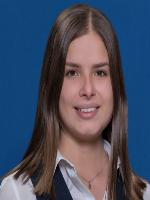Pyramid Architects: How to Design Mayan Pyramids in 3D
,
HBGCC - Posters, Table 26
Session description
Outline
1. Introduction & Objectives (5 minutes)
Goal: Introduce the project and outline the session’s objectives.
Provide a brief explanation of Mayan pyramids and their significance in history and architecture.
Overview of the session structure: research, design, and 3D modeling.
Set clear expectations: by the end of the session, participants will create a basic 3D model of a Mayan pyramid.
2. Historical Context & Quick Research (10 minutes)
Goal: Give participants a brief introduction to the Mayan pyramids.
Present key facts about Mayan architecture (structure, symbolism, and purpose).
Participants conduct a quick, guided research on key architectural elements (step pyramids, terraces, symmetry).
Outcome: Participants jot down key points for reference during their modeling phase.
3. Introduction to SketchUp (10 minutes)
Goal: Familiarize participants with the SketchUp software.
Quick demo: Show the essential SketchUp tools (e.g., draw, push/pull, orbit, and scale).
Walk through creating basic geometric shapes and explain how to modify them to form a pyramid.
Encourage participants to follow along in their SketchUp environment.
Outcome: Participants understand the basics of the software and how to start their 3D design.
4. Designing a Mayan Pyramid (25 minutes)
Goal: Participants create their own Mayan pyramid model.
Step-by-step guidance on constructing a simple Mayan pyramid using SketchUp.
Encourage participants to apply the historical knowledge from their research to make their models accurate.
Allow room for creativity, enabling participants to modify their pyramids while keeping core architectural elements.
Outcome: Participants have a 3D model of a Mayan pyramid.
5. Sharing & Reflection (10 minutes)
Goal: Conclude the session with reflections and sharing.
Participants briefly showcase their 3D models.
Discuss what they learned about the architecture and design process.
Reflect on how technology can help them visualize and understand historical structures.
Outcome: Participants share their creations and insights, reinforcing both the history and design aspects of the project.
Supporting research
https://sic.cultura.gob.mx/ficha.php?table=zona_arqueologica&table_id=119
https://lugares.inah.gob.mx/es/zonas-arqueologicas/regiones-culturales/filiacion/14279-maya-14279.html?item_id=14279
https://help.sketchup.com/es/sketchup/getting-started-sketchup
Presenters







Session specifications
Topic:
Grade level:
Audience:
Attendee devices:
Attendee device specification:
Tablet: Android, iOS, Windows
Participant accounts, software and other materials:
Subject area:
ISTE Standards:
Knowledge Constructor
- Curate information from digital resources using a variety of tools and methods to create collections of artifacts that demonstrate meaningful connections or conclusions.
- Build knowledge by actively exploring real-world issues and problems, developing ideas and theories and pursuing answers and solutions.
- Develop, test and refine prototypes as part of a cyclical design process.

 Back
Back Trips and Tours
Trips and Tours